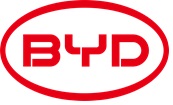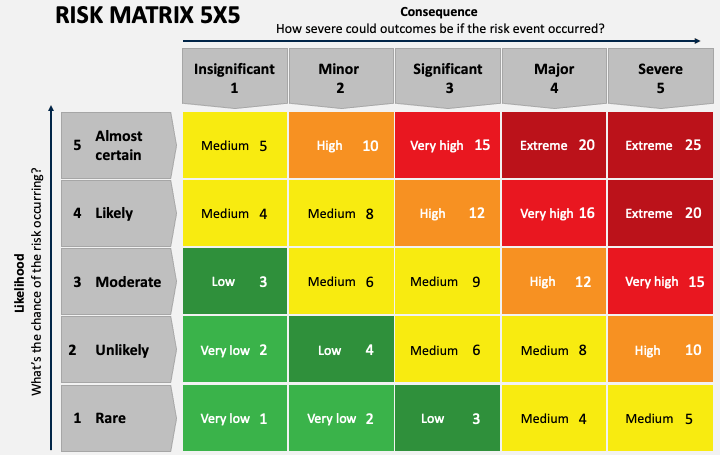Title Page
-
Reference No.
-
Form Title
-
Site conducted
-
Site Address
-
Work COMMENCEMENT DATE
-
Prepared by
-
Participant Details
-
Approved by He Sun
Emergency
-
A&E / Hospital Address
-
All BYD UK engineers have Electricians First Aid kits and eyewash kits inside the vans.
-
Fire Emergency Rescue Plan:
Do not tamper with any fire detection or fire fighting devices.
Do not block fire escape route.
Keep all fire doors closed.
Know the escape routes in your environment.
Know the locations of break glass fire alarm buttons and fire fighting equipment, and make sure they are easily accessible.
Know the designated assembly points.
Learn to use fire fighting equipment.
For laboratories or special work areas, develop emergency shut down procedures for processes which may create hazards when unattended. -
Injury Emergency Rescue Plan:
Learn first aid.
Make sure first aid kits, including specific antidotes if applicable, are well stocked at all time.(All BYD UK engineers have First Aid kits / eyewash kits inside the vans.)
Learn how to use the antidotes if hydrofluoric acid or cyanide is used.
Laboratory users should know the location of emergency shower and eyewash, and make sure they are easily accessible -
Electricity Shock Emergency Rescue Plan:
Assess the situation and ensure your own safety before attempting to help the victim.
Call for emergency medical assistance and provide accurate details about the situation.
Disconnect the power source using insulated gloves or non-conductive tools if it is safe to do so.
Do not touch the victim until the power source has been disconnected.
Perform basic first aid, such as checking vital signs and providing CPR if necessary.
Monitor the victim closely until medical help arrives and be prepared to administer CPR if needed.
Prevent future shocks by educating yourself and others about electrical safety and following good practices
Hazards of work and control measures
-
Reference
-
Working in clients’ premises
The contractors should work in the site which is supervised by the client and the operators should access the site and do the operations with the approval from client. -
Risk Rating: Very low 2
-
Current Control Measures
Prior to entering the premises, contact nominated person from Client
All persons working within the Client premises must be given site induction as appropriate to the hazards, rules and arrangements on site
Any site vehicle entering the premises of a client must adhere to the speed restrictions displayed All persons entering the premises must adhere to any site rules underlined within the induction
Appropriate personal protective equipment must be worn when visiting/working in the confines of the Client premises Seek permissions from the Client prior to carrying out any works. A permit to work may be required, particularly for hot works, asbestos works, excavations, etc
At all times keep good communications between the Client & the operatives on site. This may require a periodic formal meeting
Any incident occurring on site will be notified to the Client when possible
All operatives engaged within the work activity shall be competent for the tasks they are performing
The operative will have the right of final veto for any action where he considers that, from personal experience; the action may lead to an unsafe situation and inform the Client -
Manual Handling
During on-site inspection,corresponding manual operations are required, such as opening the cabinet door, removing the rain cloth, &lifting some tools etc
Current Control Measures -
Risk Rating: Low 3
-
Current Control Measures
If the load is heavy or awkward, ensure a Manual Handling Assessment has been done. If necessary, GET HELP
In all cases, where it is reasonably practicable to do so, mechanical means of lifting loads will be used and systems of work followed by all operatives concerned
When necessary and reasonably practicable, loads to be manually handled will be made smaller or lighter
Appropriate, suitable and sufficient personal protective equipment will be issued to operatives as and where it has been identified as necessary
Locations of storage areas and delivery points etc for loads will be carefully planned before work commences
All persons identified as being at risk will receive instruction, information and adequate training for the tasks they may be allocated
Repetitive lifting or motions required to move an object should be avoided
All items in excess of 25KG to be lifted and carried via team lifting where it is not feasible to use mechanical means -
General Housekeeping
At any time where the work area is to be left unoccupied the work area must be left in such a way to not pose a risk to anyone who may access it. This shall include: Securing any loose materials and ensuring no sharp objects, cutting tools, off cuts have been left around the work area which could pose a hazard
Current Control Measures -
Risk Rating: Low 3
-
Current Control Measures
All waste materials to be cleared from work areas up and bagged
Bagged waste materials must be removed from the work areas and placed in the waste skips provided
Cutting tools should be put into the designated tool box or a sealed bag
Garbage such as rain cloth should be disposed of in the corresponding garbage bins according to the waste recycling standards -
Hazardous Substances
Hazardous substances are stored on site and relevant risks need to be assessed in advance -
Risk Rating: Medium 9
-
Current Control Measures
COSHH assessments to be produced and contents communicated to all site operatives
Operatives to be supplied with correct PPE/RPE for the substances used as outlined in the COSHH assessments Operatives to maintain good hygiene standards. -
Lone working
Only employees who have the physical and psychological capabilities to undertake such work, and have received appropriate training from the Company and are authorised to do so, will be permitted to work alone & When performing a certain operation, complete the relevant work without the accompaniment of the customer -
Risk Rating: Low 3
-
Current Control Measures
The employee is prohibited from carrying out high risk activities such as live work and confined space, and undertaking work at high levels when working alone
Verbal communication through the use of a telephone / mobile phone will be maintained by the employee contacting their supervisor at the agreed intervals based on the risk rating level of each individual specific activity. This will include informing the supervisor on the commencement and completion of planned works
The Company will ensure adequate first aid facilities are readily accessible. The employee will be provided with a fully stocked first aid container for treating minor injuries
The employee will be briefed on the risks associated with lone working including emergency procedures and arrangements. Where applicable, this will be done in consultation with the Client When necessary, the supervisor will undertake periodic site visits to communicate and liaise with the employee on the progress of on-going site activities
Prior to commencement of works the employee will carry out a visual inspection of the work area to ensure it is free from obvious slip and trip hazards. Any concerns will be reported to the supervisor
The employee will ensure that the work area remains tidy, and that materials are positioned to minimize trip hazards, and that all spillages are cleared away on discover
The employee is required to ensure the tread on their safety footwear remains suitable and that the Company is advised where these are requiring replacement
The employee will notify the supervisor prior to lone working of any prescription drugs which may be being administered which could affect his normal duties
Only blocks weighing no more than 25 kg should be lifted -
Work at height
The ESS units are on a raised platform and the site stuff should walk through the handrail and access steps to the platform for the further work. Risks of falls from height resulting in serious injury/fatality -
Risk Rating: Low 3
-
Current Control Measures
Strictly follow the on-site entry instructions and use stairs to climb onto the raised platform smoothly and safely
Steps need to be regularly inspected for risks such as cracks
The platform needs to be regularly maintained and inspected for any risk of collapse
Do not approach the edge of the platform to prevent falls caused by stepping on it -
General electrical works
-
Risk Rating: Medium 9
-
Current Control Measures
All works are to be planned and controlled by a competent person, who will supervise the works at all times Safe isolation procedures must be implemented on site on any electrical feeds
Unidentified cables and fixtures will be treated as live until proved otherwise
Prior to the removal of any electrical cables, it must be confirmed dead by a competent person
All electrical installations on site will be carried out by approved, (within the meanings of the 18th IET Regs.), (BS7671), electricians only
The design and installation of electrical supplies, installations and equipment will be undertaken, after a thorough assessment of the site is made, by trained, fit and competent persons for that specific task
Other Hazards
-
Hazards Identified
-
Task and potential risks
-
Risk Assessment by answer Likelihood & How Severe Questions
-
Risk Rating :Very low 1
-
Risk Rating :Very low 2
-
Risk Rating :Low 3
-
Risk Rating :Medium 4
-
Risk Rating :Medium 5
-
Risk Rating :Very low 2
-
Risk Rating :Low 4
-
Risk Rating :Medium 6
-
Risk Rating :Medium 8
-
Risk Rating :High 10
-
Risk Rating :Low 3
-
Risk Rating :Medium 6
-
Risk Rating :Medium 9
-
Risk Rating :High 12
-
Risk Rating :Very High 15
-
Risk Rating :Medium 4
-
Risk Rating :Medium 8
-
Risk Rating :High 12
-
Risk Rating :Very High 16
-
Risk Rating :Extreme 20
-
Risk Rating : Medium 5
-
Risk Rating :High 10
-
Risk Rating :Vey High 15
-
Risk Rating :Extreme 20
-
Risk Rating :Extreme 25
-
Current control measures
Description of tasks
- Task
-
undefined
-
Work involved checking asset HMI display active and history error logs and also connecting a laptop to the diagnose interface as well as recording the system communication data for further analysis if needed.
-
Risk assessment
-
Risk Rating :Very low 1
-
Risk Rating :Very low 2
-
Risk Rating :Low 3
-
Risk Rating :Medium 4
-
Risk Rating :Medium 5
-
Risk Rating :Very low 2
-
Risk Rating :Low 4
-
Risk Rating :Medium 6
-
Risk Rating :Medium 8
-
Risk Rating :High 10
-
Risk Rating :Low 3
-
Risk Rating :Medium 6
-
Risk Rating :Medium 9
-
Risk Rating :High 12
-
Risk Rating :Very High 15
-
Risk Rating :Medium 4
-
Risk Rating :Medium 8
-
Risk Rating :High 12
-
Risk Rating :Very High 16
-
Risk Rating :Extreme 20
-
Risk Rating : Medium 5
-
Risk Rating :High 10
-
Risk Rating :Vey High 15
-
Risk Rating :Extreme 20
-
Risk Rating :Extreme 25
-
Mini 5 points of PPE: Hard Hat, Hi Vis Vest, Gloves, Safety Glasses, Safety Boots
-
Category 1 plus: Arc rated Cargo Trousers, Arc rated shirt or long sleeved T shirt
-
Category 2 plus: Arc rated coveralls
-
Category 3 plus: Arc rated face shield
-
Category 4 plus: Arc rated hood
PPE & Documents related to this RAMS
-
All on site engineers are requested to wear ARC flash rated coveralls, helmet, Safety boots, Safety Glasses and gloves . Wear arc-rated face shield for BMS and battery module work.
Operatives
-
I have read, understood and will adhere to this RAMS. Before undertaking any changes to the above works I will immediately advise the site supervisor of the changes.
Print Name and Signature
-
Print Name and Signature












